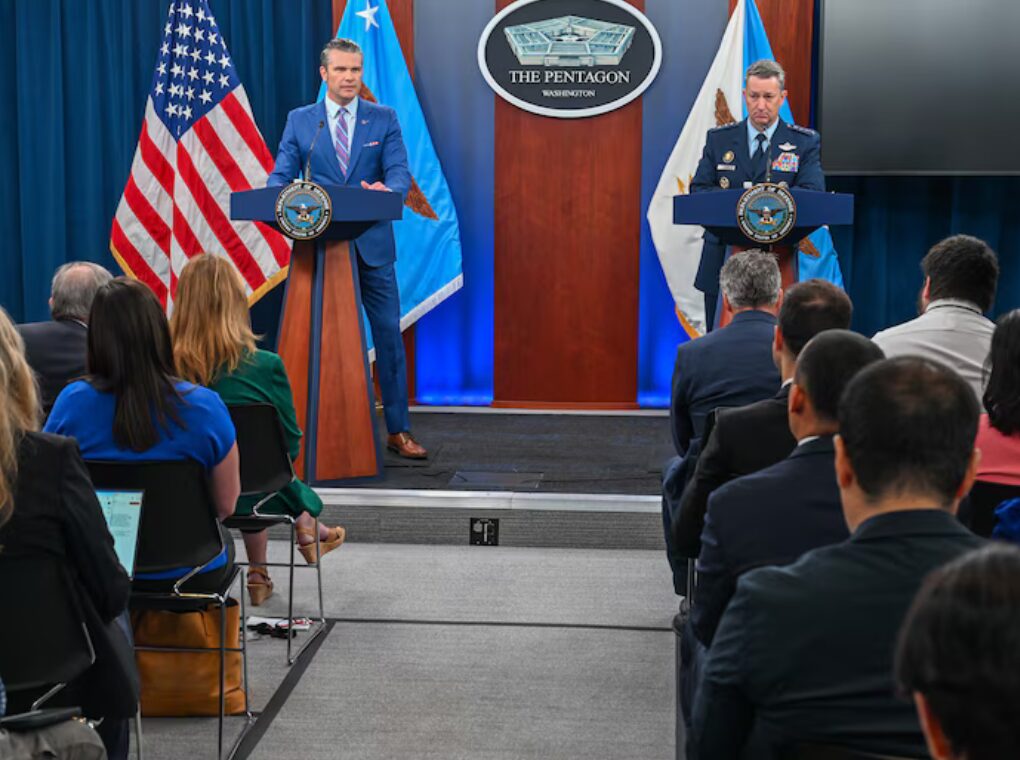A massive, secretive military operation 15 years in the making culminated this weekend in the destruction of Iran’s primary nuclear enrichment site, marking what officials are calling one of the most successful military strikes in U.S. history.
In a coordinated effort dubbed Operation Midnight Hammer, U.S. B-2 Spirit bombers deployed 14 GBU-57 Massive Ordnance Penetrator (MOP) bombs to eliminate Iran’s Fordow Fuel Enrichment Plant and a secondary nuclear facility. The operation, executed on the evening of June 21 (June 22 local time in Iran), delivered a crippling blow to Tehran’s nuclear capabilities and effectively ended a 12-day war between Iran and Israel.
“This was an historically successful attack, and we should celebrate it as Americans,” said Secretary of Defense Pete Hegseth during a Pentagon briefing. “Because of decisive military action, President Trump created the conditions to end the war and obliterated Iran’s nuclear capabilities.”
Hegseth credited the operation’s conception and long-term planning to a small team at the Defense Threat Reduction Agency (DTRA), which began studying Iran’s underground nuclear infrastructure in 2009. The Fordow site, located beneath a mountain roughly 60 miles south of Tehran, posed an extraordinary challenge. The U.S. initially lacked a weapon capable of penetrating such depth — until DTRA engineers, alongside defense industry partners, developed the 30,000-pound GBU-57.
The Long Road to Midnight Hammer
Air Force Gen. Dan Caine, Chairman of the Joint Chiefs of Staff, provided extensive detail on the mission’s roots and execution.
“In 2009, a DTRA officer was brought into a vault and shown images of a massive underground construction project in Iran,” Caine said. “That officer, soon joined by a teammate, spent the next 15 years working with the intelligence community and defense partners to develop the means to eliminate it.”
The GBU-57 bomb, engineered specifically to destroy hardened underground targets, was repeatedly tested in realistic environments. According to Caine, hundreds of test shots were conducted before the final weapon was ready.
At 6:45 p.m. Eastern on June 21, B-2 bombers from Whiteman Air Force Base, Missouri, launched their mission. After flying 13,000 miles round trip over 36 hours, they successfully delivered their payload. “All weapons were delivered on-speed, on-parameter, and functioned as designed,” Caine said.
Trailing aircraft observed the strikes, reporting the explosion as “the brightest [they’d] ever seen… like daylight.”
Aftershocks and Defense
Iran retaliated with a missile barrage targeting U.S. forces at Al Udeid Air Base in Qatar. Despite the suddenness of the attack, American and Qatari air defenders successfully intercepted the incoming missiles using Patriot missile batteries — in what Caine described as the largest single Patriot engagement in U.S. history.
Forty-four American soldiers — the oldest a 28-year-old captain, the youngest a 21-year-old private — operated the Patriot defense. “They had seconds to make complex decisions with strategic impact,” Caine said. “They are the unsung heroes of the 21st-century United States Army.”
A Message of Strength and Deterrence
President Donald J. Trump, whose administration orchestrated the strike, received high praise from Pentagon leadership.
“President Trump directed the most complex and secretive military operation in history,” Hegseth said. “This gives us a chance to have peace, a chance to have a deal, an opportunity to prevent a nuclear Iran — something he’s been committed to for 20 years.”
Though battle damage assessments remain classified, officials confirm that Iran’s nuclear enrichment capabilities have been “set back by years.”
As for the U.S. military, Caine emphasized that the mission is far from over. “The joint force didn’t stand down,” he said. “We continue to defend our interests — with vigilance, preparation, and pride.”
Operation Midnight Hammer is now etched into the history books as not only a tactical success, but a demonstration of American technological might, military resolve, and long-term strategic planning.
